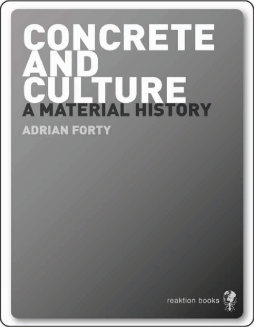
Additional Information
Book Details
Abstract
Concrete has been used in arches, vaults, and domes dating as far back as the Roman Empire. Today, it is everywhere—in our roads, bridges, sidewalks, walls, and architecture. For each person on the planet, nearly three tons of concrete are produced every year. Used almost universally in modern construction, concrete has become a polarizing material that provokes intense loathing in some and fervent passion in others.
Focusing on concrete’s effects on culture rather than its technical properties, Concrete and Culture examines the ways concrete has changed our understanding of nature, of time, and even of material. Adrian Forty concentrates not only on architects’ responses to concrete, but also takes into account the role concrete has played in politics, literature, cinema, labor-relations, and arguments about sustainability. Covering Europe, North and South America, and the Far East, Forty examines the degree that concrete has been responsible for modernist uniformity and the debates engendered by it. The first book to reflect on the global consequences of concrete, Concrete and Culture offers a new way to look at our environment over the past century.
“This book fully succeeds in portraying the most emblematic material of modern culture. Concrete is seemingly condemned to transformations, easily slipping into the role of timber or stone, with no clear identity of its own. With his engaging scholarship, Adrian Forty takes us beyond the merely concrete, showing a material that does not fit into pre-cast categories, as a projection screen of Japanese, Brazilian or Swiss identities, of fears and pleasures, a source of dislike and fascination since its invention.” — Ákos Moravánszky, ETH Zurich
“This erudite, insightful and wide-ranging study takes the field of material history in new directions. By focusing on concrete—the ubiquitous marker of modernity—we are taken through a labyrinth of intersecting cultural and political developments that range across architecture, cinema, photography, planning, and a host of other fields.” — Matthew Gandy, University College London
“Forty offers a historical account of how concrete has played a part in humans’ relationship to their physical surroundings and the global consequences. By taking into account the role concrete has played in areas like politics, literature, cinema, and sustainability, he gives readers a new viewpoint about this material.” — Choice
“Forty admits that he initially saw Concrete and Culture as an ‘entertainment’, an enjoyable project that allowed him to travel globally, but that he ended up grappling with a set of problems that were both intellectually difficult and full of rich cultural associations. Taking on a topic that has for the most part—until very recently—been the subject of technical literature, he again shows us a new way of looking at modernity, via one of its most characteristic material manifestations."
— Oxford Art Journal
“Fascinating. . . . Forty shows in arresting detail that constructing in reinforced concrete was no less industrialized, with the companies that had patented reinforced concrete systems, and their desk-bound engineers, orchestrating events on faraway sites.” — Times Literary Supplement
Adrian Forty is professor emeritus of architectural history at the Bartlett, University College London. His books include Objects of Desire: Design and Society since 1750 and Words and Buildings: A Vocabulary of Modern Architecture.
